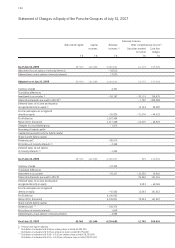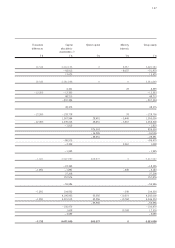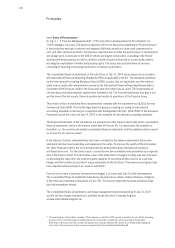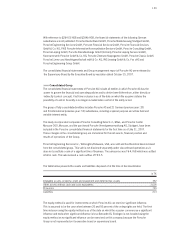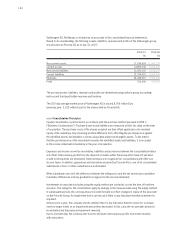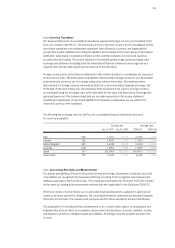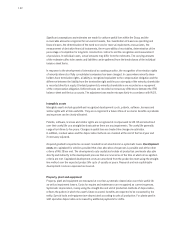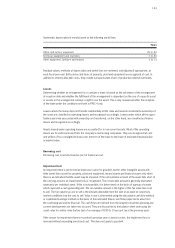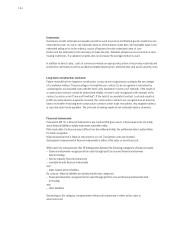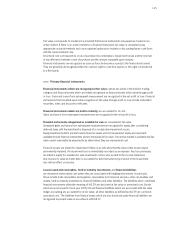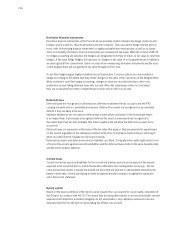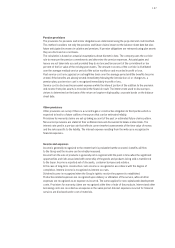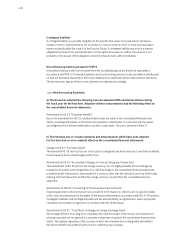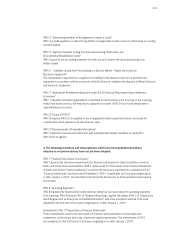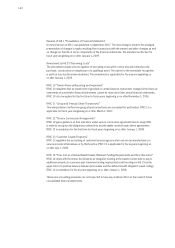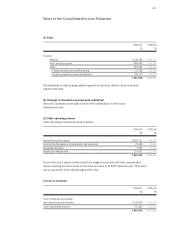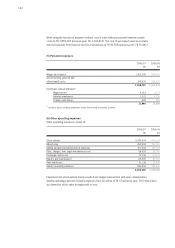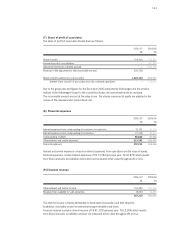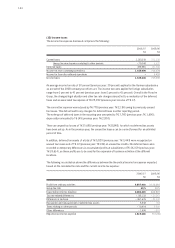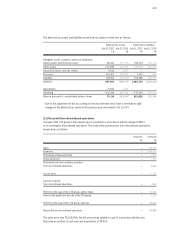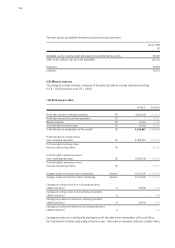Porsche 2006 Annual Report Download - page 138
Download and view the complete annual report
Please find page 138 of the 2006 Porsche annual report below. You can navigate through the pages in the report by either clicking on the pages listed below, or by using the keyword search tool below to find specific information within the annual report.136
Derivative financial instruments
Derivative financial instruments in the Porsche Group primarily relate to forward exchange contracts and
foreign currency options, interest derivatives and stock options. They are used to hedge interest and cur-
rency risks from existing balance sheet items or highly probable future transactions as well as to obtain
short-term liquidity. Derivative financial instruments are measured at fair value. When the criteria of IAS 39
for hedge accounting are satisfied, the hedges are designated from then on either as fair value or cash flow
hedges. A fair value hedge hedges the exposure to changes in fair value of a recognized asset or liability or
an unrecognized firm commitment. Gains or losses from remeasuring derivative instruments and the asso-
ciated hedged items are recognized at fair value through profit or loss.
A cash flow hedge hedges highly probable forecast transaction. Currency options are only included in
hedge accounting to the extent that they offset changes in the value of the cash flows of the hedged items.
When included in cash flow hedge accounting, changes in value are recorded directly in other com-
prehensive income taking deferred taxes into account. When the underlying contract is concluded,
they are reclassified from other comprehensive income with an effect on income.
Deferred taxes
Deferred taxes are recognized on all temporary differences between the tax accounts and the IFRS
carrying amounts and on consolidated measures. Deferred tax assets are recognized on accumulated
deficits if they are likely to be used.
Valuation allowances are recorded on deferred tax assets whose realization in the foreseeable future
is no longer likely. A previously unrecognized deferred tax asset is reassessed and recognized to
the extent that it has become probable that future taxable profit will allow the deferred tax asset to be
recovered.
Deferred taxes are measured on the basis of the tax rates that apply or that are expected to apply based
on the current legislation in the individual countries at the time of realization. Deferred taxes referring to
items recorded directly in equity are disclosed in equity.
Deferred tax assets and deferred income tax liabilities are offset, if a legally enforceable right exists to set
off current tax assets against current tax liabilities and the deferred taxes relate to the same taxable entity
and the same taxation authority.
Current taxes
Current income tax assets and liabilities for the current and previous periods are measured at the amount
expected to be recovered from or paid to the taxation authorities. Discounting where necessary. The tax
rates and tax laws used to compute the amount are those that are enacted or substantively enacted by the
balance sheet date. Current tax relating to items recognized directly in equity is recognized in equity and
not in the income statement.
Hybrid capital
Based on the bond conditions of the hybrid capital issued, this is accounted for as an equity component of
the Group in accordance with IAS 32. This means that the deductible interest is not disclosed under interest
expenses but treated like a dividend obligation to the shareholders. Any capital procurement costs are
deducted directly from the hybrid capital taking tax effects into account.


